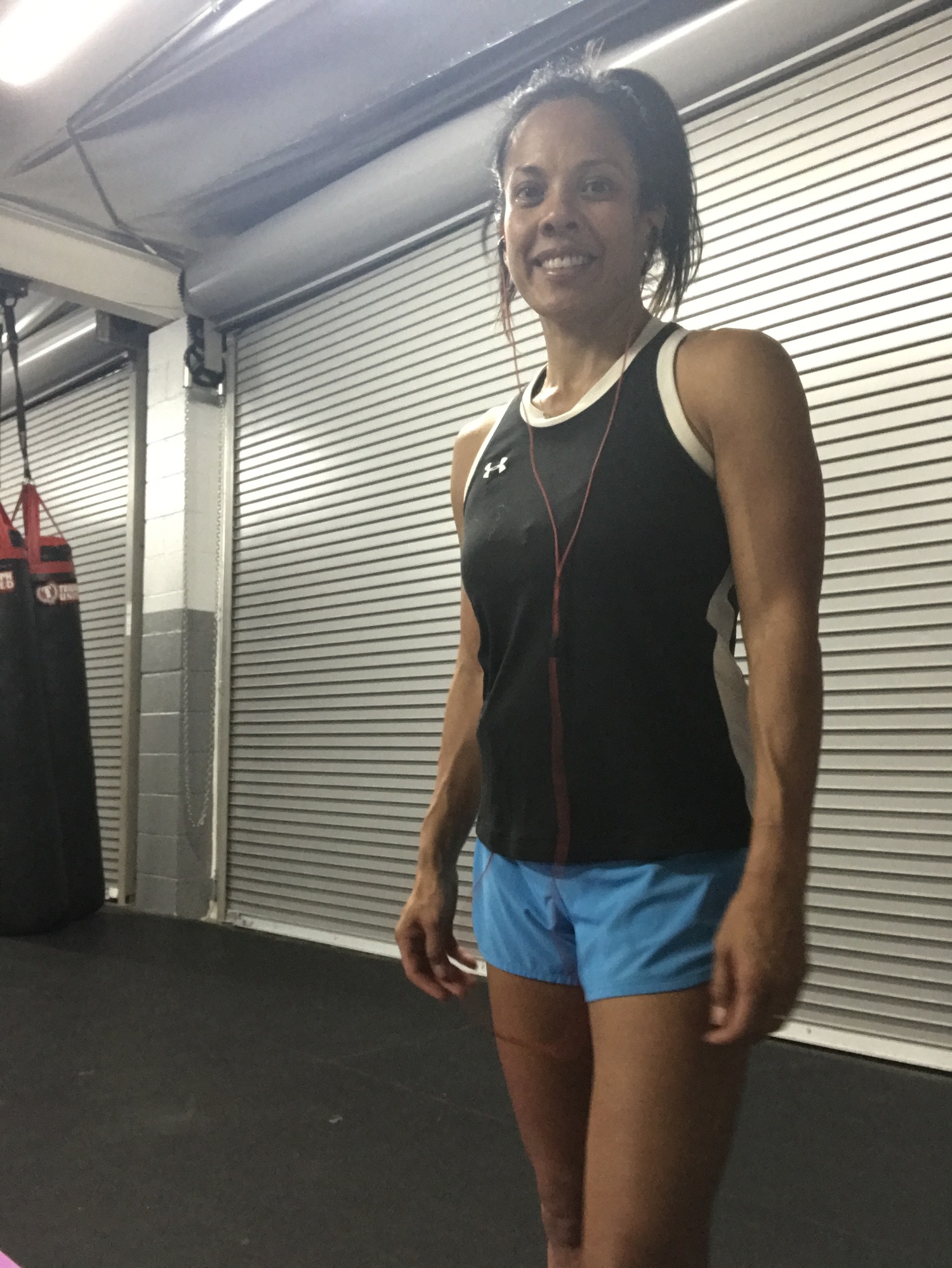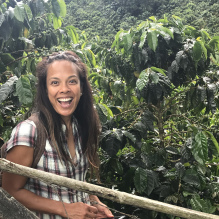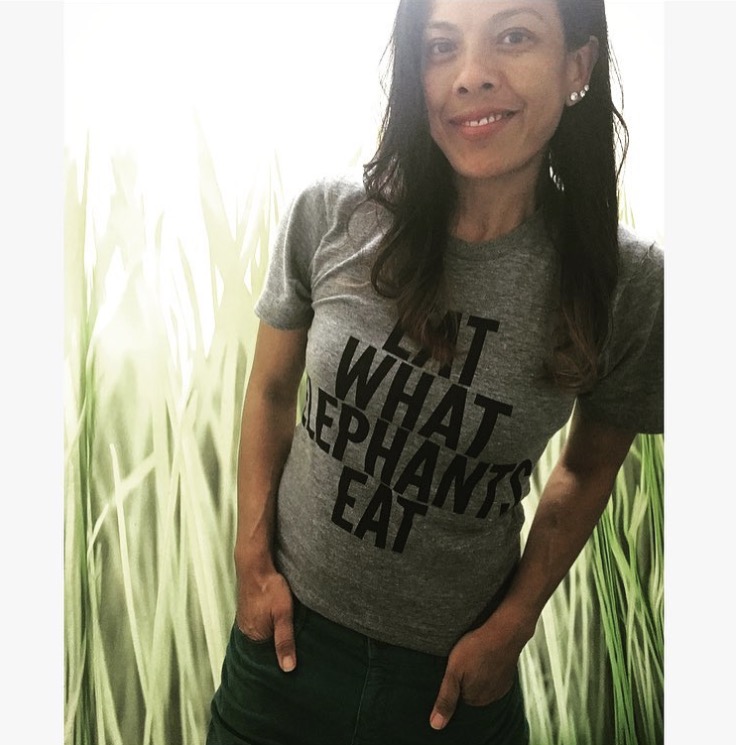I don’t work at a juice bar.
I am rarely in down-dog pose.
My name doesn’t include an astral object.
And I most definitely don’t look pale and scrawny.
These are just a few of the traditional images people have about vegans. Nope. This vegan looks like this.
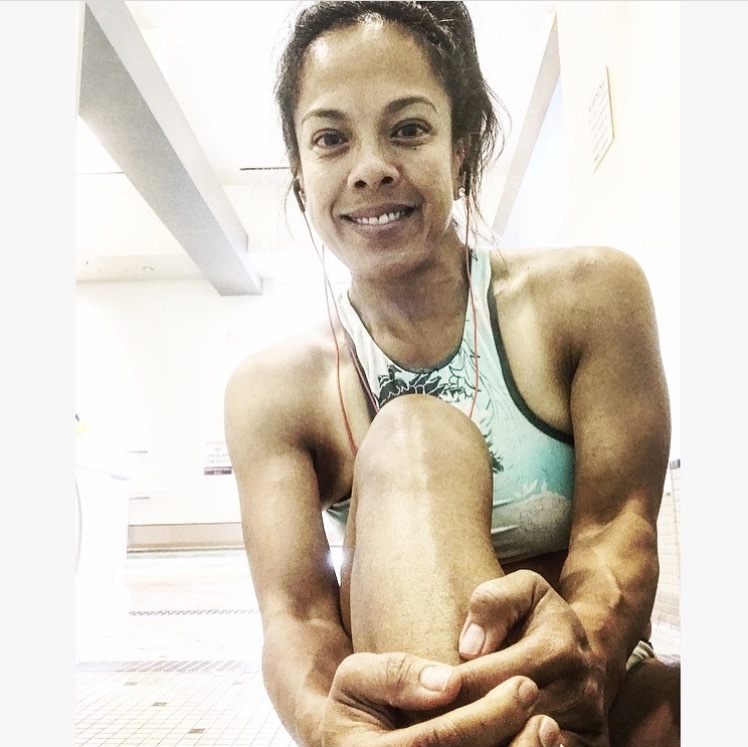
The fact that I’m also a first degree black belt in taekwondo, have run several half marathons and marathons, and qualified for the Boston Marathon further breaks these stereotypes.
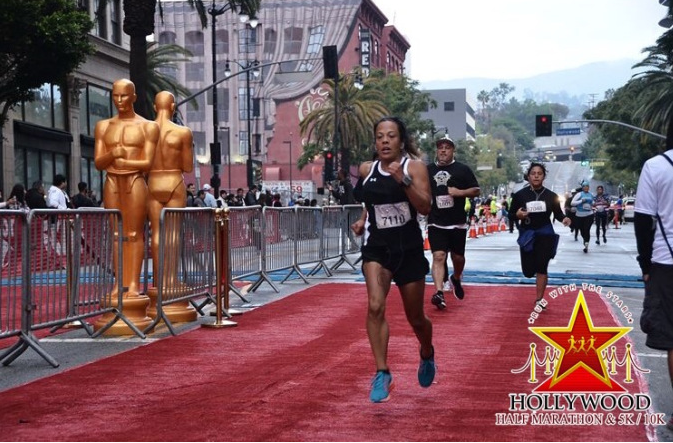
More and more vegans are coming in all shapes and sizes, including a burgeoning group of vegan athletes. Super ultra-athlete Rich Roll, whose book “Finding Ultra” was a huge inspiration, made a loud statement for moving to a plant-based diet after being named one of the 25 fittest guys in the world in 2009 by Men’s Fitness magazine. But veganism isn’t just for endurance athletes. Uber muscular vegans, like former NFL defensive lineman David Carter and bodybuilder Torre Washington are further smashing the weak vegan stereotype. While the number of vegan athletes is growing, due to the misconceptions mentioned above, I found myself wary about committing to a plant-based diet, and my journey to veganism has for sure been a circuitous one.
Since the early ‘90s, I have had meatless tendencies, and as the years progressed, I became more knowledgeable about vegetarianism (abstaining from animal flesh) and veganism (abstaining from all animal products, including eggs and dairy). In addition to the health advantages of a vegan diet, I learned about the environmental benefits and, of course, the tragedy of factory farming. Since 2007, I have primarily been on a vegan diet, meaning I cheated with non-vegan options for dessert and pizza, as well when traveling. Because Paris, OK? However, while 80% vegan or “veganish” was a strong statement for veganism, it wasn’t until March 2016 that I made the full commitment, and I haven’t looked back.
In my nine-year journey to transitioning from an 80% vegan athlete to finally a 100% vegan athlete in 2016, I had a meandering route. The reasons for my stop-start dance with veganism were based on concerns that perhaps some athletes contemplating a switch to a plant-based diet might be struggling with. Hopefully my experience can help. Here were some discomforts I had to work my way through:
- But where will I get my protein? At first, my diet relied on fake meats because I was fearful that I would die from lack of protein. Now I rarely eat faux chicken or the like. Turns out beans, peas, kale, spinach, etc. and ad infinitum all contain protein. Also, you don’t need as much protein as you’ve been told you need.
- Not feeling full. This was weird. Being raised a meat-and-potatoes girl, it was uncomfortable not feeling stuffed after a meal. You know what? You learn to love this lightness. In fact, that is primarily why I found myself gravitating towards a vegan diet as a marathoner; I hated feeling weighed down by meat in my body.
- Not getting enough iron. My previous bloodwork has intermittently indicated that I’m borderline anemic, meaning that I have to be diligent with getting enough iron. People traditionally associate iron with meat, but I use one iron supplement and eat a lot of beets. This seems to take care of that.
In exchange for giving up animal protein, I have increased energy and decreased recovery time. Decreased recovery time means I can train more, which means more athletic gains and faster race times. In fact, after becoming 100% vegan in March 2016, I PRd both of my half marathons, taking a full 6:30 plus off my former PR from 2012. I then smashed my marathon time by 33 minutes and qualified for the Boston Marathon after four years of trying. Now, in full disclosure, I also added a trainer and speedwork to my training last year which was instrumental; however, all of the workouts were fueled by plants. At the very least, being vegan was not a detriment to the demands my trainer put on my body. However, more accurately, being plant-based allowed me to take on and thrive under the increased pressure and elevated workouts he put me through.
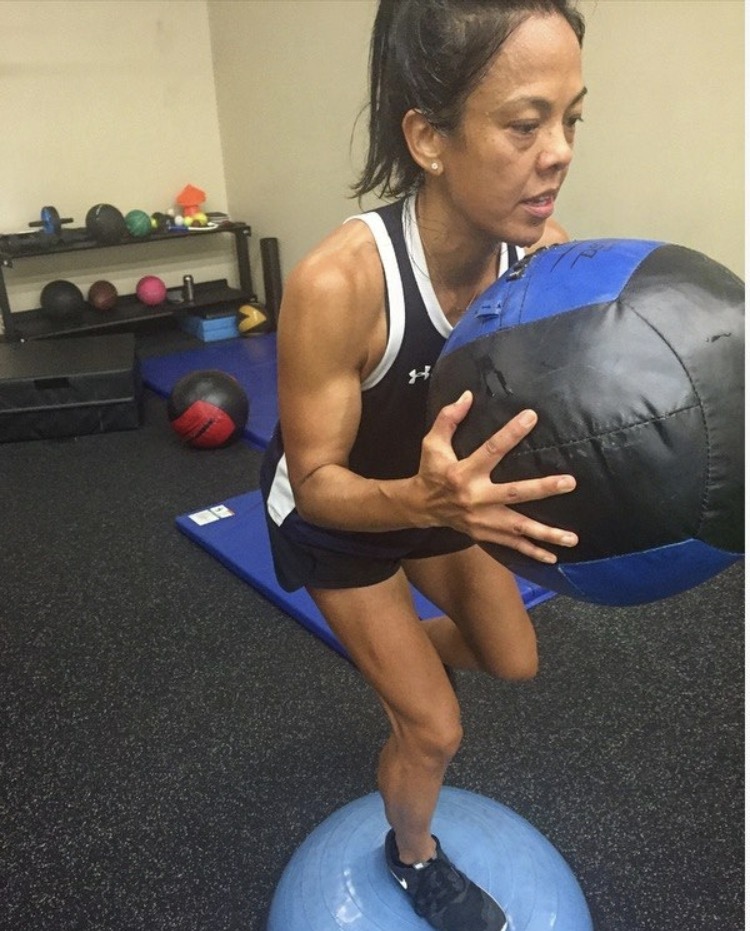
I like specifics, so this is what a typical eating day looks like for me:
Breakfast: Beet, banana, blueberry, coconut water, and almond milk smoothie.
Lunch: Salad with kale, red chard, arugula, spinach, mixed greens, beets, edamame, carrots, avocado, tofu, and dressing with omega 3s.
Dinner: Brown rice, tofu or mushrooms, two types of veggies, and some fat to fill me up.
Snack: Peanut butter balls made with oatmeal and protein powder.
I never worry about my protein intake. And, when someone inevitably poses the question that is the title of this post, here is an answer that I heard another vegan athlete say. Actually, it’s a question in response to their question: “Well, where does your protein get its protein?” See, cows and chickens don’t eat animal protein either. So if plants and seeds are a good enough protein source for the protein that you’re eating, then…
A new breed of vegan is emerging that is strong and performs at a high level athletically. If veganism is something that’s been rolling around in your mind as something you’d like to try, then I strongly encourage you to do so. Have fun with it, be curious, and experiment. The nourishing plant-based food I eat not only gives me energy and strength, it makes my body and soul light, and those cumulative effects shine through. This is what a 50-year old non-protein deficient vegan athlete looks like.
